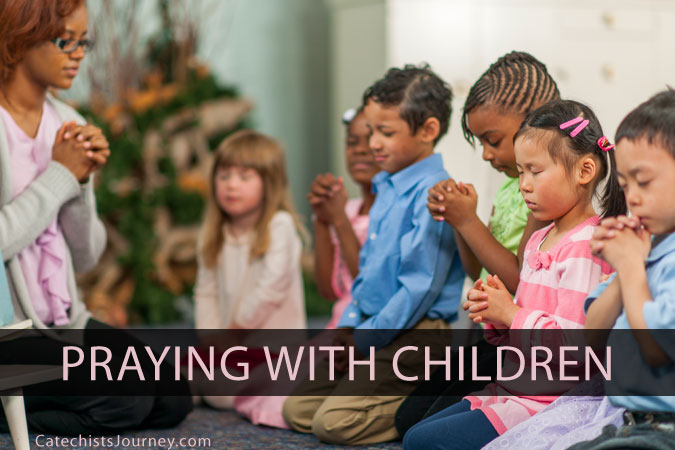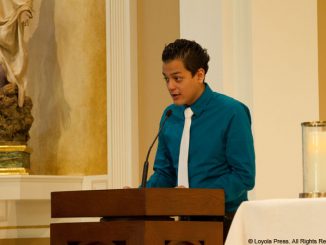
I like to vary how my class prays partly to give everyone more tools in their prayer toolbox, but also because not everyone learns or prays in the same way on a given day. When I teach about the Holy Family, I teach my first-graders simple signs in sign language (ASL), which we practice together.
Thanks to YouTube, you can easily teach yourself signs and phrases in ASL. I have learned how to sign “thank you,” “God,” “Jesus,” “family,” “mother,” “father,” “brother,” “sister,” “pets,” “class,” “I love you,” and “Amen.” The children learn quickly, and they enjoy connecting the sign to the word. For instance, to sign the word “pet,” it looks like you are petting an animal. The sign for “Jesus” is a reminder of the nail marks in his hands. Involving their hands immediately eliminates the squirminess that sometimes happens in a circle, and that’s a bonus.
When it’s time for prayer, I explain that we are going to pray for families without speaking any words at all. I usually open prayer time with a song that’s familiar, but for this prayer, I play only instrumental music. I completely dispense with my usual opening remarks and just use gestures to get them quiet and still. They catch on very quickly, and because it’s so different, they’re engaged right away. I mouth the words along with the signs, and then I invite each child to sign their thanks for something. Every single child participates, and it is powerful in its silence and simplicity.
What surprised me about this idea this time was how much the children remembered about the lesson. The following week, when we were reviewing, everybody remembered every single sign. They remembered signs I had forgotten I’d taught! Talking about Mary and learning the sign for “mother” really connected in their brains. In fact, during prayer time that day, a few of the children signed their prayer rather than spoke it, which I did not expect. It’s moments like these that remind me that God is actively at work in these children’s lives, so I just step aside and enjoy it.
Early in his papacy, Pope Francis invited us to preach the Gospel without excluding anyone. Showing the children that it’s possible to communicate—and pray—without speaking reminds them that even those who can’t speak or who can’t hear remain integral members of the Body of Christ. They spread Jesus’ message by speaking with their hands rather than their voices, and that is perfectly normal. I hope that if the children encounter someone who can’t hear, they will remember this message delivered through some simple signs in prayer.
Adaptive Finding God is the foremost program of its kind, offering faith formation for children with special needs that is adaptable for a variety of settings and situations.





If you want to teach your class some Catholic prayers in ASL, Loyola Press has videos you can use to teach yourself – or show in class. YouTube has the option to change the playback speed in case you want to slow it down. (I’ve found this VERY helpful since I’m not fluent in ASL.) Look for OPTIONS (lower right corner of the video) and change the playback speed.
https://www.loyolapress.com/our-catholic-faith/parish-ministry/special-needs/resources/american-sign-language-prayers
Give it a try!